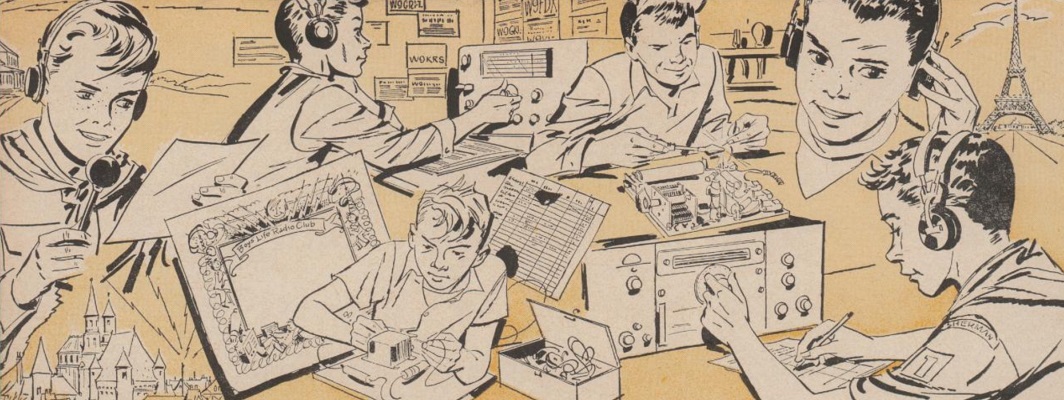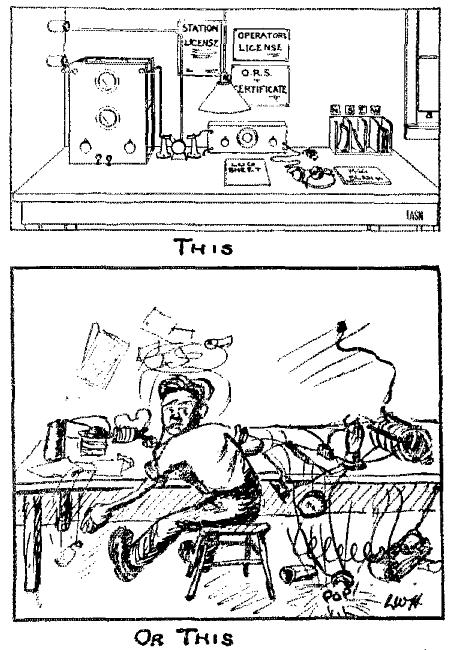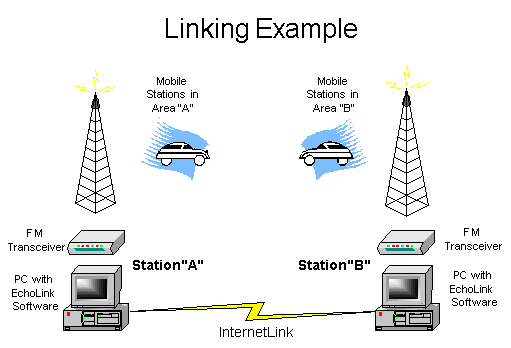 We had a great time at Disney World! My hats off to the XYL for a ton of research and planning that went into the trip. One resource that really paid off was the PassPorter’s Walt Disney World 2009: The Unique Travel Guide, Planner, Organizer, Journal, and Keepsake! by Jennifer and Dave Marx. While I had a few other Disney books on my Kindle, the PassPorter was a veritable pirate’s treasure trove of advice and tips that did the most for making our trip and absolute, unqualified success.
We had a great time at Disney World! My hats off to the XYL for a ton of research and planning that went into the trip. One resource that really paid off was the PassPorter’s Walt Disney World 2009: The Unique Travel Guide, Planner, Organizer, Journal, and Keepsake! by Jennifer and Dave Marx. While I had a few other Disney books on my Kindle, the PassPorter was a veritable pirate’s treasure trove of advice and tips that did the most for making our trip and absolute, unqualified success.
We opted to take a direct flight for Kansas City to Orlando on Southwest. I don’t think it was the cheapest flight and Southwest has their quirky seating policy. However, with the kids (a 4 year old and a 8 month old) a direct flight was the best option. Fortunately, those traveling with small children get to board first, so even with Southwest’s cattle call seating we were able to keep the family intact.
Transportation from Orlando International to Disney World was via Disney’s own bus service. When staying at a Disney resort, this is a great service. Again, the XYL doing the research ahead time was able to get special tags for our checked luggage so we were able to bypass the baggage carousel and head straight for the Disney Express. Our baggage would then be retrieved by Disney and taken directly to our room at the resort.
The ride to our resort, Disney’s Animal Kingdom Lodge, was quick. The bus was equipped with overhead TVs playing an introduction video explaining check in at the resorts and other information. We arrived at the Animal Kingdom Lodge around 1pm and were able to quickly check in and head to our room. The room had two queen beds and overlooked the animal reserve that surrounded the resort. Giraffes, zebras, and other animals were grazing in the savanna like area a mere 50 yards away.
The XYL had also done some research on the meal plan that Disney offers. It is a bit complicated, but worth understanding. With a little bit of planning, opting for the meal plan can save quite a bit of money. We went down to the resort’s food court to grab a quick lunch and make sure our meal plans were working correctly. Then it was off to the resort’s bus stops to head to the Magic Kingdom.
Disney World has a massive transportation system that is primarily made up of buses, but there are also water taxis and of course the monorail. From resorts, you can travel to any of the parks (Magic Kingdom, Epcot, Hollywood Studios, and Animal Kingdom). From each park, you can travel to any of the resorts. Things get tricky if you want to travel from one resort to another (like to go to one of their restaurants or just look around). It requires you to first go to a park and then catch another mode of transportation to that specific resort. Things become complicated towards nighttime when parks start closing as transportation usually only runs to the parks for only one hour after closing. There are several iPhone/iPod Touch apps that track park opening and closing times which we used several time to make sure we didn’t end up going to a park in order to catch a bus that was no longer running. Some resorts are right on the monorail which makes life a breeze to get to both the Magic Kingdom and Epcot. Despite the complexity of the transportation system, you rarely wait longer than 20 minutes and the bus drivers (boat drivers, etc.) are all extremely helpful to help you get where you want to go.
And with that point I need to stress that every Disney employee (or as Disney calls them: Cast Members) is extremely helpful. From the bus drivers, hotel clerks, maids, restaurant waiters, store clerks, park security, ticket takers, and the staff members in the park. They all have an excellent attitude and do their best to make sure you are happy. An this is really what makes Disney World a top notch vacation destination. What makes the difference for Disney is the quality of their employees. All are dedicated to making your experience the best it can possibly be.
During our stay we traveled to all the parks. I most enjoyed the Magic Kingdom. Hollywood Studios would probably be my next favorite – although we didn’t get to spend as much time there as we wanted. All the parks were quite busy during the pre-Christmas days. Going early or staying late helped avoid the crowds. Also one park a day will have an early opening or late closing just for resort guests – which really helps.
Disney has many excellent restaurants that can get quite fancy but are also kid friendly. We enjoyed several of the finer restaurants like the Artist’s Point at the Wilderness Lodge and the restaurant on the 15th floor of the Contemporary resort (the California Grill) were we were able to enjoy the Magic Kingdom’s firework show from the comfort of our window-view table. There are also dining events specifically geared to allow the kids meet the many Disney characters. Our 4 year old daughter loved these, as she was able to meet just about everyone from Mary Poppins to June from Little Einsteins. Her highlight was the princess breakfast at the Cinderella Castle. She got to meet Cinderella downstairs and then most of all the rest of the princesses during breakfast (Sleeping Beauty, Snow White, Jasmine, and Ariel). While costs can be steep, effective use of the meal plan can really make it affordable.

Disney also affords the opportunity for the kids (and sometimes the adults) to get made-up in a certain Disney theme. We first took advantage of this with the Pirate’s League where individuals are able to get made-up as pirates like you’d find on the Pirate’s of the Caribbean (my favorite ride). The four year old was made up to look like Captain Hook, to include the red coat, eye patch, and sword. She had a blast. The Disney folks involved in the process “stay in character” and act like they are recruiting you to become a pirate, give you a pirate name, educate you in pirate lore and vocabulary, and then outfit you with a bit of pirate treasure. Again, the Disney employees are amazing in this process and really help to create the illusion. Towards the end of our stay, the four year old went to the Bibbidi Bobbidi Boutique (aka from the Cinderella story) were Fairy Godmothers make-over girls into one of the many Disney princesses. My daughter chose Aurora (aka Sleeping Beauty) and got to spend the remainder of the day in her princess dress and crown.

The whole Disney experience was excellent. Although it was expensive at times, I always felt I was getting great value and with the XYL’s research we saved money were we could. What really helped out on the finance side was the incredible deal Disney offers to the military members. My park ticket was free for 5 days. In addition, I was able to buy my family members 5 day tickets for half the normal price. A big thank you to Disney for that!
Would I take the family back? An absolute YES! Perhaps when the eight month old is four, we’ll head back. Next time I’d like to stay a little longer and probably we will try to go in the off-season to take advantage of smaller crowds.
Did I use amateur radio? Yes – a little bit. There is an excellent 2M repeater that gave great coverage across the parks. When the XYL and I had to split up, we were easily able to use our HTs to keep in touch.
 The Signal Corps Bulletin was the professional journal of the US Army’s Signal Corps from 1920 to 1940. After the establishment of the War Department’s radio net, a section was included in the back were individual stations could make comments about their equipment, personnel transfers, and sometimes snipe at rival stations. Station WAR, located at Ft. Meyer, VA (near Washington D.C.) was net control for the net that reached all the way out to San Francisco, Seattle, Alaska, Hawaii and even the Philippine Islands. The following is taken from a Bulletin from the late 20s which I found pretty amusing:
The Signal Corps Bulletin was the professional journal of the US Army’s Signal Corps from 1920 to 1940. After the establishment of the War Department’s radio net, a section was included in the back were individual stations could make comments about their equipment, personnel transfers, and sometimes snipe at rival stations. Station WAR, located at Ft. Meyer, VA (near Washington D.C.) was net control for the net that reached all the way out to San Francisco, Seattle, Alaska, Hawaii and even the Philippine Islands. The following is taken from a Bulletin from the late 20s which I found pretty amusing:
 Unfortunately my station looks a bit more like the one on the bottom rather than the top. I need to make a concerted effort this weekend to get things straight. It shouldn’t take long to get things in order, the hard part is just to get started.
Unfortunately my station looks a bit more like the one on the bottom rather than the top. I need to make a concerted effort this weekend to get things straight. It shouldn’t take long to get things in order, the hard part is just to get started. I’m continuing my research of
I’m continuing my research of  I contacted Dr. Haring (she’s a professor at Auburn University) and asked if she could provide me any additional information on the MARS Bulletin. Dr. Haring told me that she had accessed the MARS Bulletin while conducting research at both the Library of Congress and Columbia University’s library. She also recommended a search tool called
I contacted Dr. Haring (she’s a professor at Auburn University) and asked if she could provide me any additional information on the MARS Bulletin. Dr. Haring told me that she had accessed the MARS Bulletin while conducting research at both the Library of Congress and Columbia University’s library. She also recommended a search tool called 
 – Following another lead for QST, I found a letter to the editor in the October 1998 issue from a gentleman by the name of Robert Gabardy, K4TJ. In the letter, Mr. Gabardy explained how he was part of a team which formed to bring MARS back to life back in 1949 and explained how they arrived a the new name for the organization. I was able to contact the retired Lieutenant Colonel Robert Gabardy, who served in the US Army for a period of over 23 years and is a veteran of WWII. He was able to give me a bit more background and also agreed to respond to some additional questions that I am developing.
– Following another lead for QST, I found a letter to the editor in the October 1998 issue from a gentleman by the name of Robert Gabardy, K4TJ. In the letter, Mr. Gabardy explained how he was part of a team which formed to bring MARS back to life back in 1949 and explained how they arrived a the new name for the organization. I was able to contact the retired Lieutenant Colonel Robert Gabardy, who served in the US Army for a period of over 23 years and is a veteran of WWII. He was able to give me a bit more background and also agreed to respond to some additional questions that I am developing. – My last hot lead comes from another QST letter to the editor from the June 1998 issue that had caused LTC Gabardy to write in. This letter was from George Hart, W1NJM, a former staff member of ARRL… but also a former member of the AARS and also an Army veteran of WWII. From what I can tell now, Mr. Hart is in a retirement facility in Connecticut. I am going to try to reach him tomorrow and see if I can conduct a telephone interview with him. He would be an amazing source of information into how AARS functioned. I am particular interested in trying to determine why the US Army failed to directly draw from the pool of trained AARS operators to fill the ranks of the Signal Corps after Pearl Harbor. Equally confusing is why the Army didn’t maintain the organization to continue to fulfill its domestic responsibilities of acting as an auxiliary communications network. Instead AARS disintegrated within hours after Pearl Harbor, but only to be replaced later by the Wartime Emergency Radio Service (WERS).
– My last hot lead comes from another QST letter to the editor from the June 1998 issue that had caused LTC Gabardy to write in. This letter was from George Hart, W1NJM, a former staff member of ARRL… but also a former member of the AARS and also an Army veteran of WWII. From what I can tell now, Mr. Hart is in a retirement facility in Connecticut. I am going to try to reach him tomorrow and see if I can conduct a telephone interview with him. He would be an amazing source of information into how AARS functioned. I am particular interested in trying to determine why the US Army failed to directly draw from the pool of trained AARS operators to fill the ranks of the Signal Corps after Pearl Harbor. Equally confusing is why the Army didn’t maintain the organization to continue to fulfill its domestic responsibilities of acting as an auxiliary communications network. Instead AARS disintegrated within hours after Pearl Harbor, but only to be replaced later by the Wartime Emergency Radio Service (WERS). 

 After a week of cold temps here on the eastern edge of Kansas, it looks like we are finally going to see some relief and also bid farewell to all the snow that’s been hanging around.
After a week of cold temps here on the eastern edge of Kansas, it looks like we are finally going to see some relief and also bid farewell to all the snow that’s been hanging around.
 I have been reading a few of books lately that have focused on the geek/nerd subculture. Benjamin Nugent’s
I have been reading a few of books lately that have focused on the geek/nerd subculture. Benjamin Nugent’s 
 Two other books focus on the Dungeons and Dragons role-playing culture. Mark Barrowcliffe’s
Two other books focus on the Dungeons and Dragons role-playing culture. Mark Barrowcliffe’s  Ethan Gilsdorf’s
Ethan Gilsdorf’s  I rented this on my Apple TV:
I rented this on my Apple TV:  These examinations of the geek/nerd subculture have been very enlightening. The recent ground swell is probably due to the maturity of those who lived through the hay-day of Dungeons and Dragons (late 70s and early 80s) which also paralleled the computer revolution. Whether it is for recreational escape or gravitating towards rule-based environments, the geek/nerd has come out of the high school A/V closet and has proudly integrated as a member of society… no longer on the social fringe.
These examinations of the geek/nerd subculture have been very enlightening. The recent ground swell is probably due to the maturity of those who lived through the hay-day of Dungeons and Dragons (late 70s and early 80s) which also paralleled the computer revolution. Whether it is for recreational escape or gravitating towards rule-based environments, the geek/nerd has come out of the high school A/V closet and has proudly integrated as a member of society… no longer on the social fringe.
 It is snowing now – NWS says we’ll get 2 inches. I am hoping for more. I’ll have to do a bit of shoveling to clear the driveway in the morning, then I’ll head out with the 4 year old for some sledding. Should be a good time, although with
It is snowing now – NWS says we’ll get 2 inches. I am hoping for more. I’ll have to do a bit of shoveling to clear the driveway in the morning, then I’ll head out with the 4 year old for some sledding. Should be a good time, although with 


 We had a great time at Disney World! My hats off to the XYL for a ton of research and planning that went into the trip. One resource that really paid off was the
We had a great time at Disney World! My hats off to the XYL for a ton of research and planning that went into the trip. One resource that really paid off was the 

 It has been a tough few weeks with multiple papers and writing assignments falling within a very small period of time. I kept my nose to the grind stone and with the hep of the XYL running interference to keep me away from distractions (amateur radio being one), I successfully finished all my work!
It has been a tough few weeks with multiple papers and writing assignments falling within a very small period of time. I kept my nose to the grind stone and with the hep of the XYL running interference to keep me away from distractions (amateur radio being one), I successfully finished all my work!